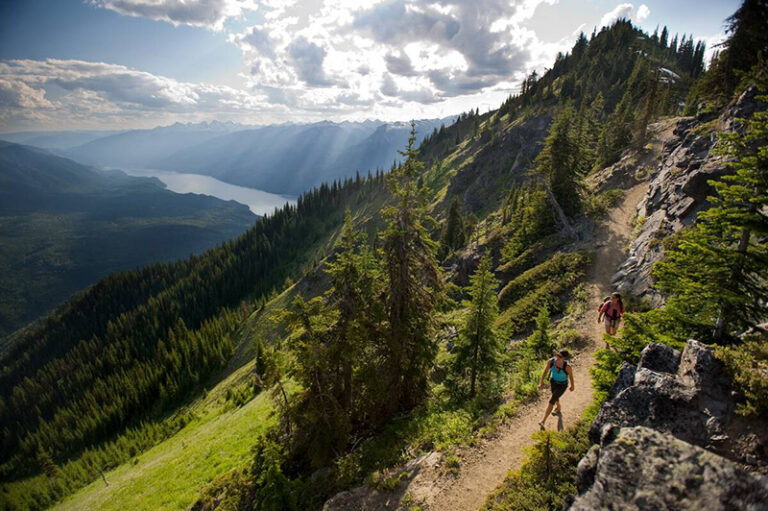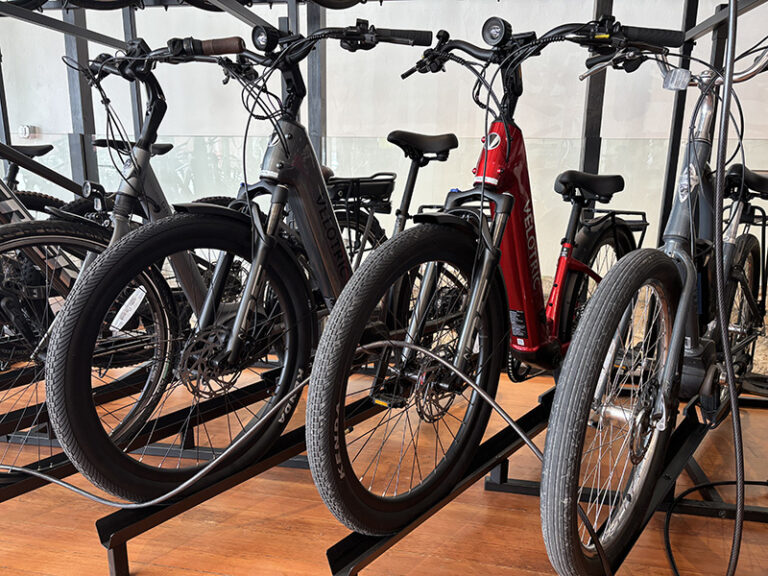With global temperatures on the rise, forests in our region are changing and are expected to change even more. Forests make up nearly half of the land area in the Pacific Northwest, providing resources for local economies, habitat for fish and wildlife, and abundant recreation and traditional activities. In our region, temperatures have risen of 1.3 degrees Fahrenheit over the last century, and are projected to rise between 3 and 10 degrees in the next decade, according the Environmental Protection Agency (EPA). Our late summer “smoke season” is an example of the changes to come.
Alongside land use changes in the form of development, climate change is having the biggest impact on the health and productivity of our forests. Increases in temperature have and will effect production, distribution, and disturbances of our region’s forests.
One seemingly positive outcome from climate change is that spring will come earlier, and trees will have more time to grow—along with more of some resources to help them grow. Warmer temperatures mean the growing season will increase by several weeks. Also, the main cause of climate change—the increase of carbon dioxide (CO2)—can make trees more productive. CO2—along with water and sunlight—are the key ingredient to photosynthesis.
But across the region, precipitation patterns have and will continue to change. Drier areas are experiencing more frequent droughts, and the percent of precipitation falling as snow has declined. This has lead to lower snowpack, early snow melt, and lower stream flows across the region. A region’s snowpack acts as water storage for our forests, allowing water to be available later into the summer. With this reduction, our Inland Northwest forests are drying earlier in the season. This reduction in water will mostly likely counteract any production gains from increased CO2 in the atmosphere.
There is a direct link between increases in climatic temperature and other disturbances that affect forests. Along with a longer growing season for trees comes longer and more tolerant seasons for pest insects and pathogens. Not only are these pests moving into more northern latitudes and higher altitudes, they are also having longer feeding seasons and are surviving milder winters. Additionally, droughts reduce a tree’s ability to produce sap, which is its natural defense against many predators.
For example, western pine beetles prey on the ponderosa pines. High numbers of drought-stressed trees add to greater outbreaks. In 2016, more than 12,900 acres of our region’s ponderosas died, fostered by low sap due to water stress in the trees. Eastern Washington also faces more frequent outbreaks of mountain pine beetles affecting lodgepole pines and higher elevation whitebark pine.
Warmer temperatures and drier forests have increased the number, severity, and size of forest fires as well. Many fire managers say there is no fire season; there are fire years— years of severe fires burning from spring through early winter. In 2017 more that 1.2 million acres of forest burned in the Pacific Northwest.
Forest fires and massive tree die off creates a feedback loop that adds more CO2 to the atmosphere, instead of trapping it in wood and soil. This increases our atmospheric temperature and the likelihood of more fires and pest insect activity.
The distribution of tree species is also changing with climate change. As mountain pine beetles kill off lodgepole pine in southern Oregon, they are replaced by more beetle-resistant Douglas fir and ponderosa. On the east side of the Cascades, these two species are also the most planted in industrial forestry but can be more susceptible to fires. Over the long-haul, as areas become drier, they will change drastically, altering from forest to savannah grassland and sage-steppe.
As average temperatures increase, some tree species will shift to more northern latitudes and higher elevations. In high alpine environments some species such as whitebark pine may be out competed by species that tolerate warmer seasons.
There are some steps we can take to help reduce the impact of some of these changes. For example, we can strive for healthier forest with activities like selective thinning and controlled burns, which reduces crowding and can slow the spread of insects and fire. But many changes will take time, and we will have to wait to see how our forests adapt to the changing climate.













